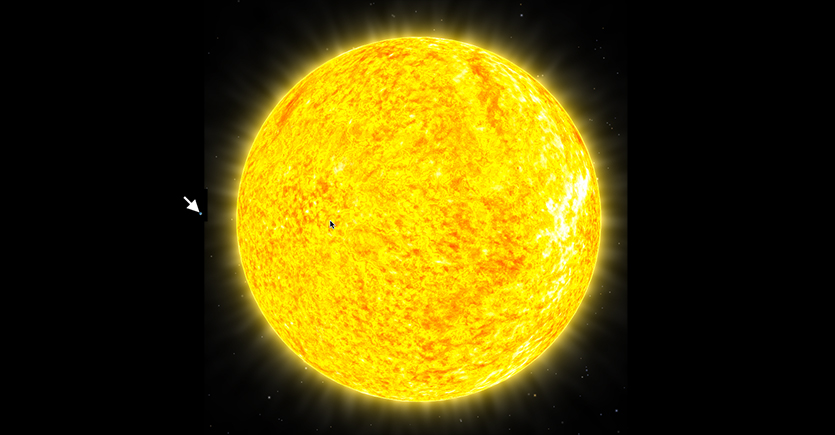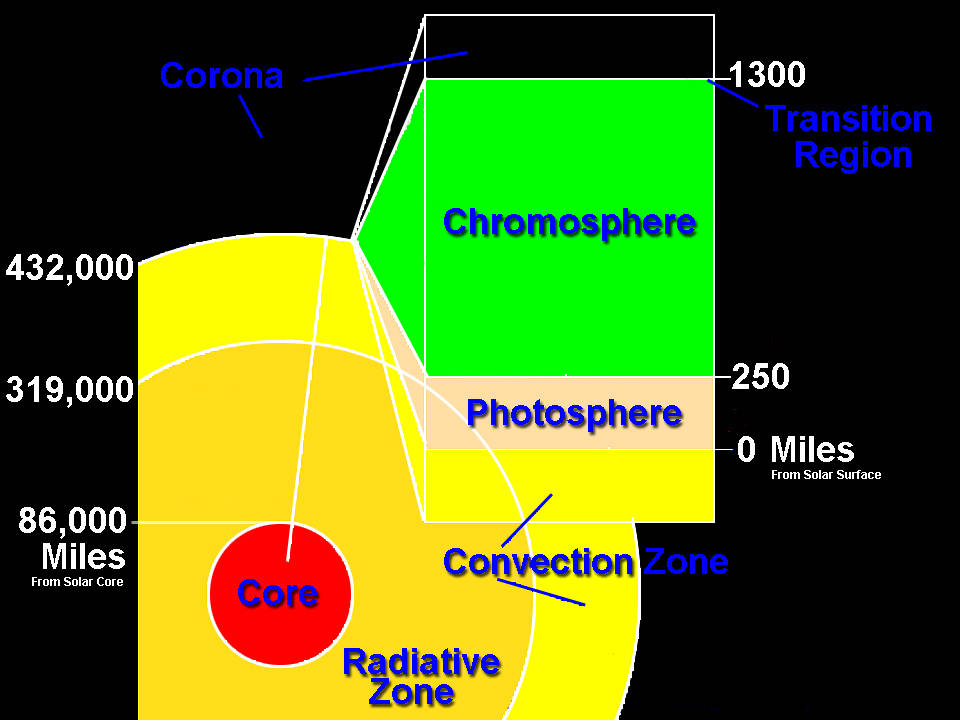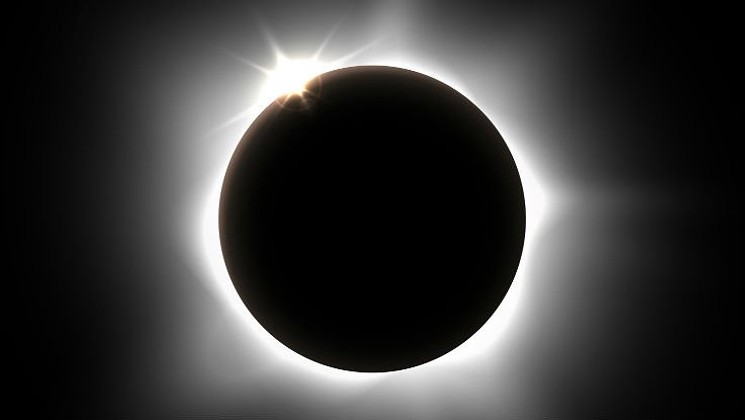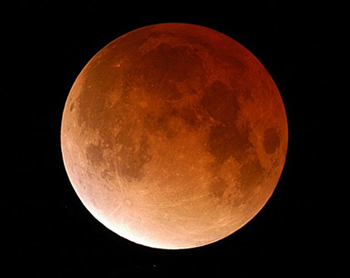Introductory Astronomy for Undergraduates
The Sun
The proper name for our Sun is Sol, which is why the
star system we live in is called the Solar System.
It is the Sun that provides the energy source that powers all life on
Earth and without it, we wouldn’t exist.
However, as far as stars go, the Sun is quite an average star. You can
get stars with masses ranging from 0.08 times to 80 times
the mass of Sol.
The Sun is a crucial component to all aspects of our Solar
System, but most importantly to our life on Earth. The Sun provides the heat
and light to our planet without which it wouldn't survive.
Energy is created in the solar core of the Sun. It then travels
through the solar interior from the core to the surface of the
Sun.

Credit:NASA
The sun at the heart of our solar system is a yellow dwarf star, a hot
ball of glowing gases. Its gravity holds the solar system together,
keeping everything from the biggest planets to the smallest particles of
debris in its orbit. Electric currents in the sun generate a magnetic
field that is carried out through the solar system by the solar wind — a
stream of electrically charged gas blowing outward from the sun in all
directions.The connection and interactions between the sun
and Earth drive the seasons, ocean currents, weather, climate, radiation
belts and aurorae. Though it is special to us, there are billions of
stars like our sun scattered across the Milky Way galaxy.
Sun Facts: ( Source: JPL Solar System Dynamics website)
Structural Zones of the Sun
Unlike the Earth, the Sun does not have a solid surface. Rather, the sun
is a ball of glowing gas. About ¾ of the Sun’s mass is hydrogen and ¼
is helium. The sun’s interior consists of the core, the radiation zone,
and the convection zone.

0901415059134d84a1f90a70c19d1d12.jpgStructural Zones of the Sun (Credit: NASA)
(Credit: NASA)
The Core: The sun produces an enormous
amount of energy in its core or center region. Burning fuel does not
produce this energy. Rather, the sun’s energy comes from nuclear fusion.
In the process of nuclear fusion, hydrogen atoms join together to form
helium atoms. Nuclear fusion occurs only under conditions of extremely
high temperature and pressure. The temperature inside the core reaches
temperatures as high as 27 million degrees Celsius. The mass of the
helium produced through nuclear fusion is less than the mass of the
hydrogen that goes into forming it. What happens to that extra mass? It
is converted to energy and slowly moves out from the core.
Radiation
Zone: The energy produced in the sun’s core moves outward through the
middle layer of the sun’s interior – the radiation zone. The radiation
zone is a region of very tightly packed gas, where energy is transferred
in the form of electromagnetic radiation (a self-propagating wave with
electric and magnetic components like light waves or radio waves).
Because the radiation zone is so thick, energy can take more than
100,000 years to move through it.
Convection Zone: The outermost
layer of the Sun is known as the convection zone. Hot gasses rise from
the bottom of the convection zone and gradually cool as they approach
the top. Cooler gases sink, forming loops of gas that move energy
towards the sun’s surface.
Astronomical Constants |
|
|
Name |
Value |
|
astronomical unit (AU) |
1.496 × 1011 m |
|
Light-year (ly) |
9.461 × 1015 m |
|
parsec (pc) |
3.086 × 1016 m = 3.262 light-years |
|
sidereal year (y) |
3.156 × 107 s |
|
mass of Earth (MEarth) |
5.974 × 1024 kg |
|
equatorial radius of Earth (REarth) |
6.378 × 106 m |
|
obliquity of ecliptic |
23.4° 26’ |
|
surface gravity of Earth (g) |
9.807 m/s2 |
|
escape velocity of Earth (vEarth) |
1.119 × 104 m/s |
|
mass of Sun (MSun) |
1.989 × 1030 kg |
|
equatorial radius of Sun (RSun) |
6.960 × 108 m |
|
luminosity of Sun (LSun) |
3.85 × 1026 W |
|
solar constant (flux of energy received at Earth) (S) |
1.368 × 103 W/m2 |
|
Hubble constant (H0) |
approximately 20 km/s per million light-years, or approximately 70 km/s per mega parsec |
Surface Features of the Sun[1]
For hundreds of years, scientists have used telescopes to study the Sun
and they have spotted many features on the surface of the sun including
sunspots and solar flares.
Sunspots: Dark spots on the sun’s
surface are known as sunspots. They may look small from Earth, but they
can be as large as the Earth itself! Sunspots are areas of gas on the
sun’s surface that are cooler than the gas around them. Cooler gases
don’t give off as much light as hotter gases, which is why sunspots look
darker. The number of sunspots can vary at a given time.
Solar
Flares: A solar flare is an explosion in the sun’s atmosphere. Flares
are powered by the sudden release of energy from the corona.
Solar
flares can greatly increase the solar winds, a thin stream of
electrically charged particles, from the corona. This increases the
number of particles reaching the Earth’s upper atmosphere. As these
particles interact and collide with the gases in our upper atmosphere,
they start to glow and this glowing is known as an Aurora.
How Sun Shines?[1]
This article discusses the age of the sun, the discovery of what the sun is made of, how the sun shines and much more.This is a Nobel Prize winning article on how the sun shines. The articles discusses the age of the sun, the discovery of what the sun is made of, how the sun shines and much more.
(Credit: https://www.youtube.com/watch?v=hL2PbAy99wE)
Solar and Lunar Eclipses
To eclipse something, is to cause a partial or total obscuring of an object. In astronomical terms, our “objects” are the Sun, Moon and Earth. This gives us two kinds of eclipses visible from the Earth: solar eclipses, where the Sun is blocked, and lunar eclipses where the Moon is blocked.

(credit: NASA)
A
solar eclipse occurs when the Moon comes exactly between the Sun's rays
and the Earth, blocking the Sun and creating a period of darkness on
the Earth. A total eclipse occurs,
where the Sun is completely blocked from our view. Total solar eclipses
happen roughly once or twice a year, and offer spectacular sights: with
the disk of the Sun completely blocked, astronomers can see the halo of
gas surrounding the Sun called the corona.
Read about The Solar eclipse 2017[2]
(https://eclipse2017.nasa.gov/eclipse-who-what-where-when-and-how)
Lunar Eclipse
During a lunar eclipse, it is the Earth that gets in the way. Typically, we can see the Moon at night because of the sunlight which is reflected off of it. Depending on where the Moon is relative to the Sun, we see difference phases (see Module 4, Tutorial 3). However, when the Moon is in just the right place, the Earth passes directly between the Sun and the Moon, preventing all of the Sun’s light from reaching the Moon.The Moon, however, never becomes completely invisible, due to some of the Sun’s light being refracted by the Earth’s atmosphere This refracted light gives the Moon a dim, red appearance.

(Credit: NASA)
During a lunar eclipse, refracted sunlight makes the dim Moon appear red in color.
Solar and Lunar eclipses-explained-video[3]
(https://www.youtube.com/watch?v=kgbK2FZFFdw)